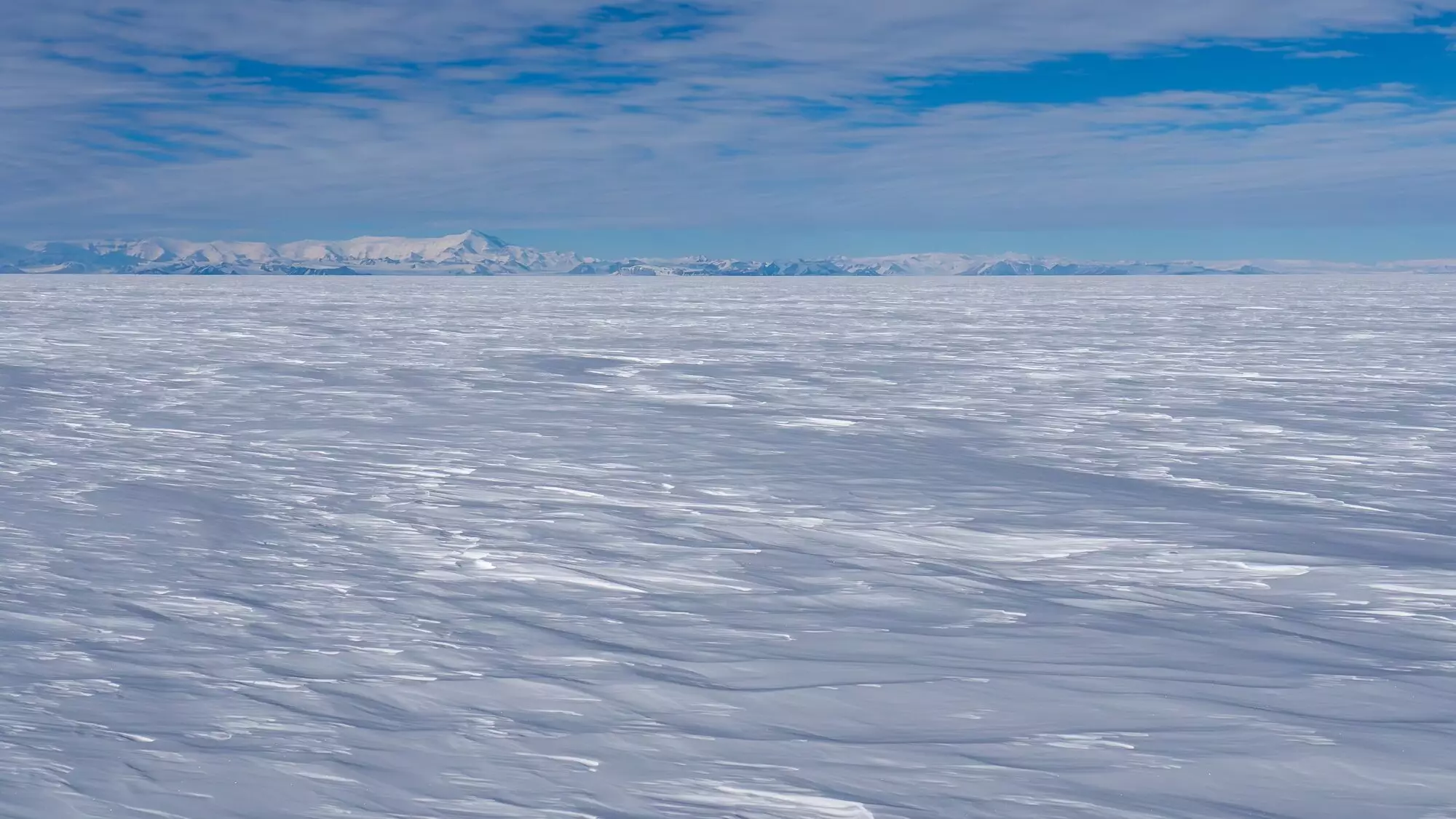Research has recently shed light on a crucial piece of the puzzle when it comes to the melt of the West Antarctic Ice Sheet. The collapse of the ice sheet in the Ross Sea region can be avoided if we are able to adhere to a low-emissions pathway. Within the West Antarctic Ice Sheet lies more than 5 meters of potential global sea-level rise, making it imperative to comprehend whether seemingly stable regions of the ice sheet may undergo melting in the future. One such stable region is West Antarctica’s Siple Coast, where ice rivers flow over the continent and empty into the Ross Sea. This ice flow is impeded by the Ross Ice Shelf, a massive ice mass comparable in size to Spain, which acts as a support to the ice sheet glaciers.
Although the Ross Ice Shelf has minimal melting at its base due to the frigid ocean waters traveling beneath, this region of the ice sheet has not always been stable. Radiocarbon dating of sediments beneath the ice sheet indicates that around 7,000 years ago, it retreated by hundreds of kilometers, only to later readvance to its current position within the last 2,000 years. Recent research conducted by GNS Science Te Pū Ao, Te Herenga Waka—Victoria University of Wellington, along with an international team including NASA’s Jet Propulsion Laboratory, delved into computer model simulations to elucidate this ice sheet retreat and advance.
The simulations carried out in the study explored the influence of changes in the ocean and Earth’s crust on the behavior of the ice sheet. The study aimed to decode the past events of the West Antarctic Ice Sheet in this region to enhance the ability to forecast future occurrences. Dan Lowry, the lead author and GNS Science ice sheet and climate modeler, mentioned that there are numerous uncertainties surrounding the processes driving ice sheet behavior. By comparing geological records with the simulations conducted under various scenarios, it was discovered that changes in ocean temperature played a vital role in the retreat and advance of the ice sheet.
While research in the Amundsen Sea Embayment of West Antarctica showed ongoing melting, it was emphasized that it is still feasible to prevent the retreat of the West Antarctic Ice Sheet in the Siple Coast region. Mitigating greenhouse gas emissions to meet the targets of the Paris Agreement could help in limiting ocean warming to levels that would not lead to the collapse of the ice sheet. The study highlighted that this region is susceptible, but not beyond saving.
Global climate models operating under high-emissions scenarios predict reduced sea ice formation and deep ocean mixing, potentially resulting in a significant ice sheet retreat akin to historical events. The study incorporated a broader range of processes compared to previous models, such as changes in sea level near the ice sheet due to its gravitational pull. By delving deeper into these complexities, the researchers were able to test hypotheses more robustly than ever before.
The recent study sheds light on the importance of understanding the dynamics of the West Antarctic Ice Sheet to mitigate the potential risks associated with its collapse. By exploring the interactions between the ice sheet, oceans, and the solid earth, researchers have gained valuable insights that could aid in developing strategies to prevent catastrophic outcomes. It is imperative to continue conducting in-depth research in this field to safeguard our environment for future generations.


Leave a Reply